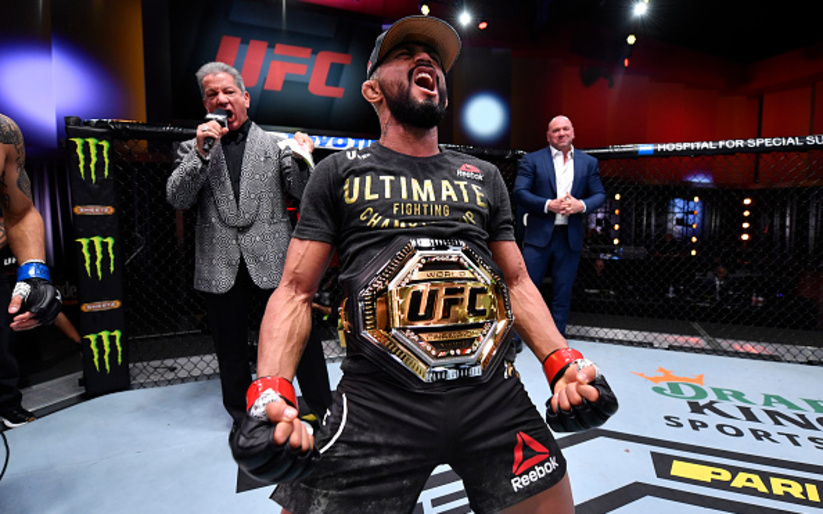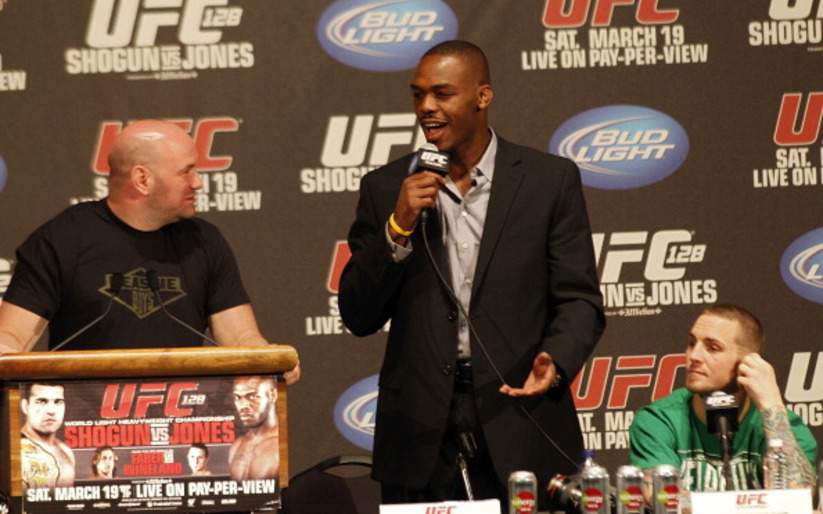In nearly two months, the UFC roster will fully be under the Reebok sponsorship deal. Although a few fighters have other sponsors such as Luke Rockhold and Robbie Lawler with Adidas, they will be obligated to wear Reebok during the week of their respective fights. This has been a heavy topic for the past five months in wondering about the future pay for fighters in the UFC.
That isn’t the full topic for this particular issue, but it may play a significant role towards the decline of younger talent in the heavier divisions. The discrepancy in depth amongst the lighter weight and heavier weight classes is quite alarming. A task of compiling a top thirty list of the best lightweights or welterweights wouldn’t be so daunting. On the heavier side, a task of compiling a top twenty list of the best light heavyweights or heavyweights would take significant research.
Why has it become so difficult to find prospects at light heavyweight and heavyweight? There isn’t one factual reason that can be pinpointed. It’s more of a series of issues that involve opportunities in other sports and fighter pay. While people want to admit it or not, MMA isn’t as popular as it was five years ago.
The UFC can’t compile a group of heavyweights like they did on season ten of The Ultimate Fighter and do unbelievable ratings. Internet sensations like Kevin “Kimbo Slice” Ferguson and well-known veterans like Roy Nelson don’t exist anymore in terms of heavyweights. The design of finding heavyweight prospects through this past year’s global expansion hasn’t been very successful so far. All of these assessments can apply to the light heavyweight division as well.
Financial concerns have to be on the mind for every aspiring fighter at this moment. Brendan Schaub stated that he lost six sponsors prior to his fight at UFC 181 against Travis Browne, due to the Reebok deal. Schaub is a veteran of the sport, along with becoming increasingly popular through his Fighter & The Kid podcast. Matt Mitrione admitted on the very same podcast (1:12:00 to be exact) about his concerns involving the Reebok deal. He went to the extent of saying that “we (fighters) have no clue about what’s going on” and lost a 30,000-dollar protein sponsor from it.
The correlation between Schaub and Mitrione isn’t only being together on the widely popular season ten of The Ultimate Fighter. They were both former college football players that had stints in the NFL. Some former college football players such as Ovince St. Preux have made the conversion into MMA successfully. How many more players that aren’t good enough for the NFL would actually attempt to become a fighter? Will they hear what former football players are saying about this new deal?
On a positive note, the Reebok deal won’t base pay off rankings from the media. It will be structured towards experience, which is a wise decision. That doesn’t eliminate major concerns from this deal. Luke Thomas brought up existing issues that haven’t been addressed by Dana White, Lorenzo Fertitta, or anyone from Zuffa.
Tenure is better than rankings, but question is whether the amount of money being taken out of sponsorship is being put back in by Reebok.
— Luke Thomas🏋️♀️ (@lthomasnews) April 20, 2015
Still don't understand why uniform can't be baseline with up to, say, 3 additional approved sponsors supplementing what's lost or available.
— Luke Thomas🏋️♀️ (@lthomasnews) April 20, 2015
Some athletes will continue to strive to play football, regardless if it’s in a minor league such as the CFL or AFL. Some will attempt to become a pro wrestler in knowing that a certain look or build can get them paid substantially. There are currently other opportunities that present better financial outlooks than trying to fight for the UFC.
By the fall of 2015, we’ll hopefully receive a clearer outlook of this sponsorship deal. This could end up being a complete overreaction on my part. It’s still unsettling that the heavier weight classes aren’t producing any noteworthy prospects. Some of the most viewed UFC events in 2015 have come from the heavier weight classes. It wasn’t just the monumental fight between Jon Jones and Daniel Cormier that drew excellent numbers. We saw that Frank Mir versus Antonio Silva can still draw a pretty successful rating. Alexander Gustafsson versus Anthony Johnson was another major hit on Fox.
Bigger weight classes will still be mostly called upon to draw the biggest audiences, regardless of the respective fighter’s current career status. Look no further in Krakow, Poland, where a good majority of the arena was chanting Mirko Cro Cop’s name repeatedly. Cro Cop may be viewed as an exception, due to his lineage. It’s still evident that heavier fighters will most likely produce vicious finishes that resonates with most combat sports fans. These divisions also consist of the most well-known fighters on the roster for the most part. Despite the rise of Ronda Rousey and Conor McGregor, casual fans will always correlate more often with bigger fighters. How is the current outlook for the heavier weight classes? Shaheen Al-Shatti posted some pretty alarming numbers about the current heavyweight division.
If you take out Stefan Struve (27), the average age for the UFC's top 5-to-15 ranked heavyweights is 36.5.
— Shaheen Al-Shatti (@shaunalshatti) April 14, 2015
To put it a different way, again taking out Struve, Frank Mir is third-youngest UFC heavyweight ranked from No. 5 to No. 15.
— Shaheen Al-Shatti (@shaunalshatti) April 14, 2015
When a fourteen-year veteran (Mir) is being labeled as the “youngest” under any context, how can that not be troubling? It can also be pointed out that the youngest ranked heavyweight (Struve) has a history of serious health problems and has been brutally finished several times. Besides Travis Browne and Stipe Miocic, have any heavyweights emerged over the past four years? None come to mind.
Another concerning sign about this scarcity comes from Phil Davis signing with Bellator. It’s fair to say that Davis never “moved the needle” and his fights were far from crowd pleasing. What can’t be taken away is his age (30 years old) and track record (9-3). This is a light heavyweight, who has proven to be a top ten fighter and currently in the prime of his career. Besides the likes of Jon Jones, Anthony Johnson, and Alexander Gustafsson, what other light heavyweight can be considered for having both of those attributes?
Zane Simon explains more deeply into how Davis’ departure makes a bad division (in depth) worse. Davis has spoken openly about pay being a major reason for his move. This applies once again to the concern about fighter pay. Unlike Schaub and Mitrione, Davis has fought in a main event on Fox and been involved in title eliminator fights. Those are pretty major credentials for a fighter in wanting a higher-paid contract.
The fear of seeing both divisions become similar to the women’s bantamweight division may become evident. A plethora of rematches and one-sided title fights may occur, due to a lack of new contenders for Jon Jones and Cain Velasquez. Both divisions were filled with world-class fighters and big names just four years ago. These fighters were headlining events routinely. Now the list is dwindling to the point, where heavyweights like Mitrione have to wait five months for a viable opponent that can elevate his career.
Can the new Reebok deal silence critics and urge college athletes to become fighters? Will the UFC’s global expansion start producing sustainable talent in these limited divisions? Those are two questions that I’ll be waiting to see answered through the next six to twelve months. While outstanding young talent is consistently rising up amongst the lighter weight classes, the same light heavyweights and heavyweights fight on a main card in a span of four to six months. That has to change in order to keep these heavier divisions maintainable within the next three years. Long-time combat sports fans witnessed the dramatic fall in popularity for heavyweight boxing fights. The same decline can apply for the UFC, if things don’t change for the better financially.
Twitter: @Allen_Strk


